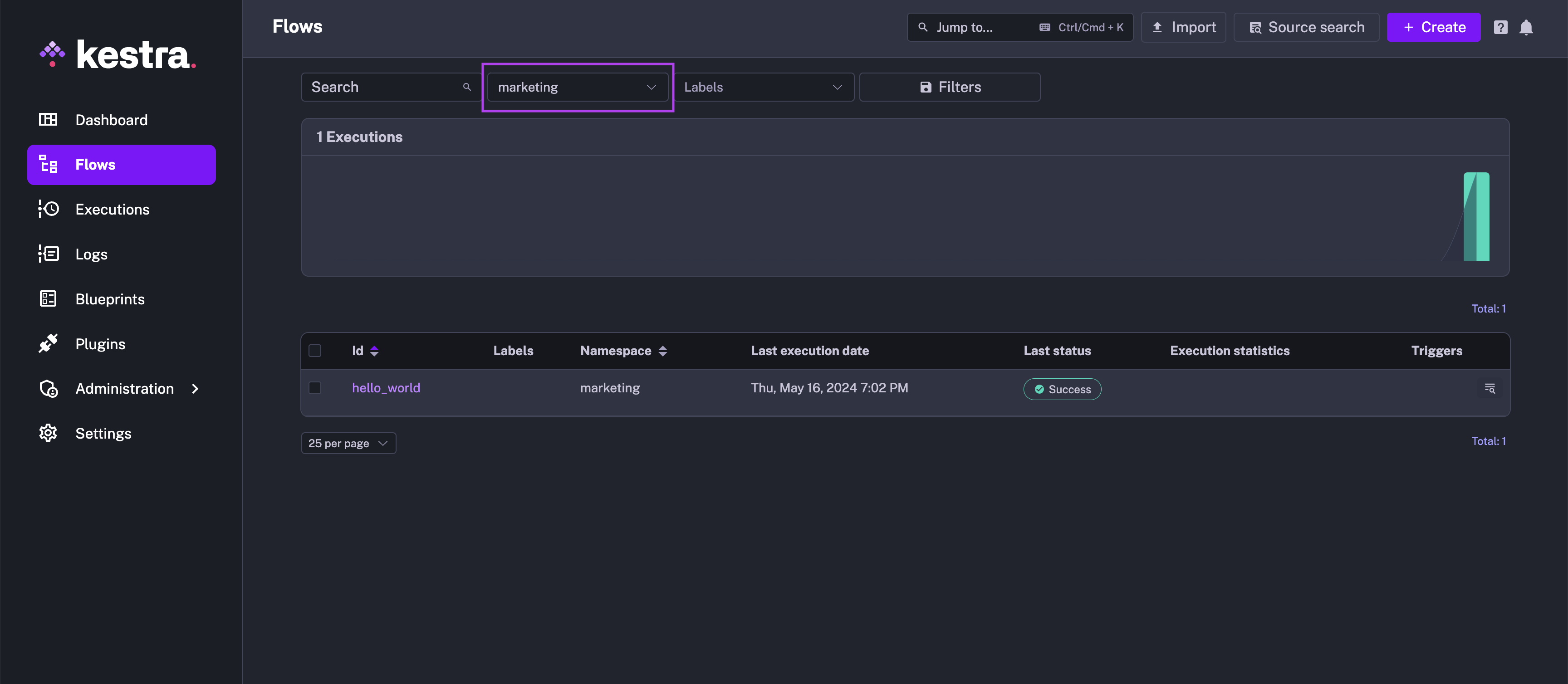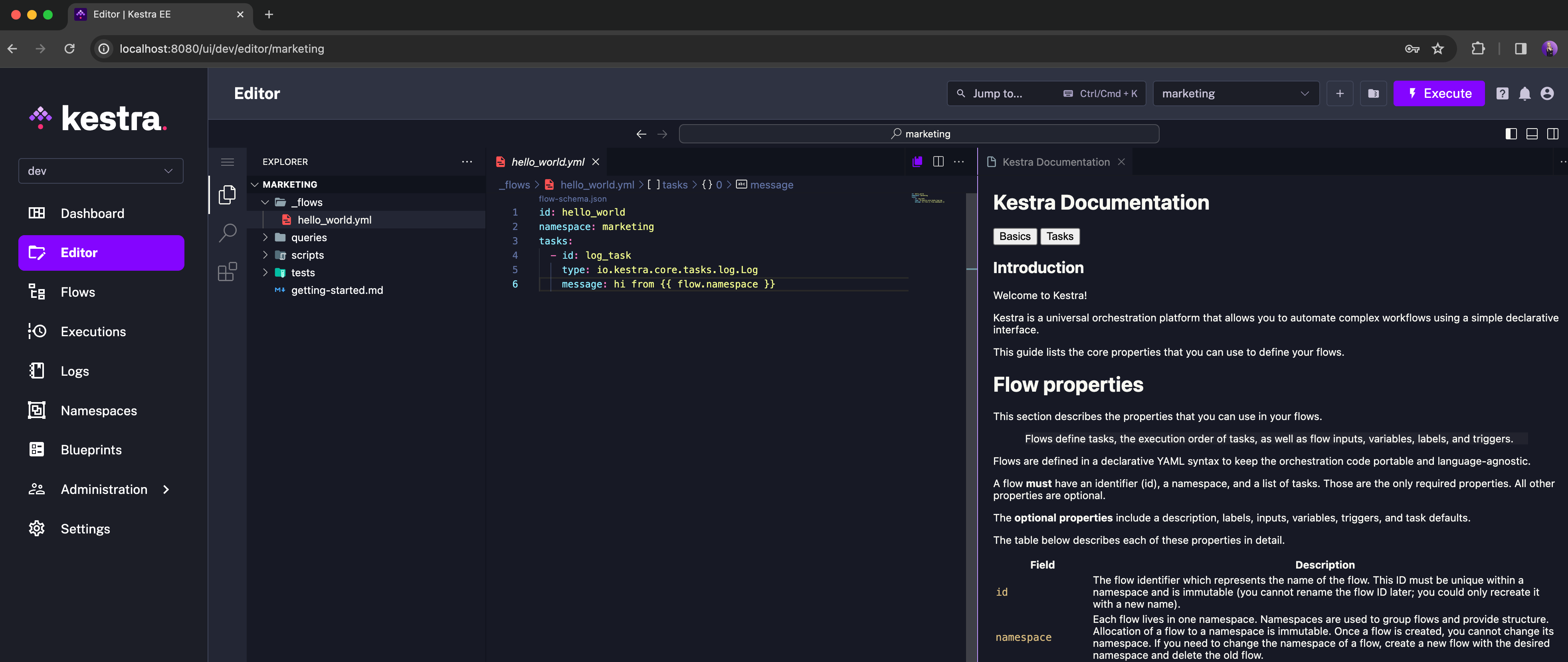 Namespaces in Kestra – Organize and Secure Workflows
Namespaces in Kestra – Organize and Secure Workflows
Namespaces are logical groupings of flows and their components.
Namespaces – organize and secure workflows
Use namespaces to organize workflows and manage access to secrets, key-value pairs, plugin defaults, variables and more.
You can think of a namespace as a folder for your flows. Similar to folders on your file system, namespaces can be used to organize flows into logical categories. Similar to filesystems, namespaces can be indefinitely nested.
If you're looking to completely isolate environments with their own resources on the same Kestra instance, you should consider Tenants, part of the Enterprise Edition.
Hierarchical structure with nested namespaces
Using the dot . symbol, you can add a hierarchical structure to your namespaces which allows you to logically separate environments, projects, teams, and departments. This way, your product, engineering, marketing, finance, and data teams can all use the same Kestra instance, all while keeping their flows organized and separated. Various stakeholders can have their own child namespaces that belong to a parent namespace grouping them by environment, project, or team.
Namespace name
A namespace name can be built from alphanumerical characters, optionally separated by .. The hierarchy depth for namespaces is unlimited. Here are some examples of namespaces:
project_onecompany.project_twocompany.team.project_three
Using namespaces to organize flows and files
When you create a flow, you can assign a namespace to it:
id: hello_world
namespace: company.team
tasks:
- id: log_task
type: io.kestra.plugin.core.log.Log
message: hi from {{ flow.namespace }}
Note: Once you've saved your flow, you won't be able to change its namespace. You'll need to make a new flow in order to change the namespace.
Below, the flow is assigned to the company.team namespace. This assignment of a namespace to a flow already provides a benefit of improved organization and filtering:

Additionally, you can organize your code on a namespace-level using the embedded Code editor and Namespace Files, with the option to sync those files from Git:

Namespace tab
In the Namespaces tab, you can see all the namespaces associated with the different flows in Kestra.
You can open the details about any namespace by clicking on the name or details button to the right of that namespace.

When you select the details button for any namespace, the namespace overview page opens which details the executions of flows in that namespace.

On the top of this page, you have different tabs:
- Overview: the default landing page of the Namespace. This page contains the dashboards and summary about the executions of different flows in this namespace.
- Executions: View and manage all the executions details.
- Flows: View all flows in the namespace with execution details and statistics. Select the details button to navigate to a specific flow's page.
- Dependencies: View flow dependencies through subflows or flow triggers.
- KV Store: Manage key-value pairs for this namespace. See KV Store for details.
- Files: To manage, view and modify all the Namespace files.
The other tabs: Edit, Variables, Plugin Defaults, Secrets, and Audit Logs are only available for Kestra EE. More details about them can be found in our Enterprise Edition documentation.
Was this page helpful?